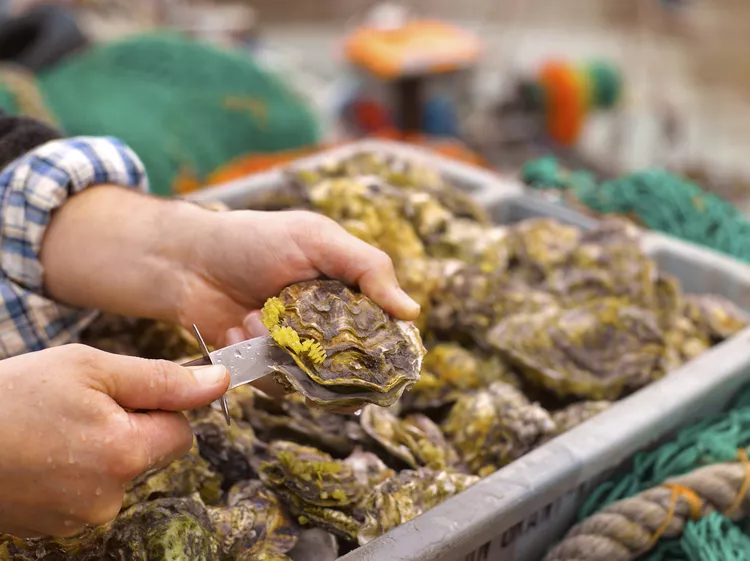Find the Top Spots for Oysters When They’re in Season
- Introduction
- Understanding Oyster Myths
- Best Places to Enjoy English Oysters
Introduction
When English oysters are in season, some of the best places to enjoy them are along the UK’s east coast. When and where should you try them?
The English coast, washed by cold waters and dotted with shallow bays and inlets, is ideal for oyster beds, both natural and farmed. This natural treasure, once considered unfit for the best dining tables, has seen a remarkable transformation.
Today, enjoying oysters is a relatively expensive seasonal treat. In the 19th century, they were so plentiful that they were considered the food of the poor. Unfortunately, the English lost their taste for these aphrodisiac bivalves, leading to a significant decrease in local consumption; much of the native oyster harvest was exported to France.
According to Natural England, in 1864, more than 700 million oysters were consumed in London. A mere century later, the total had plummeted to just 3 million due to over-fishing.
Currently, oysters are once again becoming a common delicacy, especially during the autumn and winter months when native oysters are widely available. However, non-native Pacific and rock oysters are often farmed and available throughout the year in some areas.
Understanding Oyster Myths
Is it true that oysters should only be consumed in months that have an “R” in their name? For years, it was widely believed that oysters were unsafe to eat from May through August. This myth arose because those months are the warmest in the Northern Hemisphere, making oysters more prone to spoilage; however, properly stored raw oysters, served promptly on ice, can be enjoyed year-round.
Moreover, there is a legal reason to avoid England’s native oysters from May to August. During these months, native oysters spawn and are protected by an act of Parliament during their spawning season. If the weather has been warm, it may be advisable to choose farmed, non-native species in April and September, as native oysters may not taste pleasant when spawning.
If you are eager to indulge in oysters, it’s essential to call ahead and confirm availability at restaurants. While non-native oysters are available year-round, chefs may be selective about their offerings based on quality.
Best Places to Enjoy English Oysters
- Whitby: This charming seaside town on the East Coast of Yorkshire boasts several excellent dining options. The cold waters of the North Sea create optimal conditions for oyster cultivation. Notable places to try oysters in season include:
- Moon and Sixpence: Known for serving raw rock oysters from Lindisfarne on ice or hot fried oysters with Sriracha sauce.
- The Marine: Serves local lobster and crab in addition to oysters.
- Thornham: Near the North Norfolk Coast, this village is ideal for enjoying rock oysters harvested in the tidal waters. Try them at:
- The Orange Tree: Recognized as the Norfolk Dining Pub of the Year consistently since 2013.
- Orford: Situated beside the Suffolk Heritage Coast, this village is a gateway to the National Trust’s Orford Ness National Nature Reserve. After exploring, indulge in oysters at:
- The Butley Orford Oysterage: A staple in local oyster farming for over 60 years.
- Mersea Island: Known for its rich oyster waters and the famous Colchester oysters. Key places to enjoy oysters include:
- The Company Shed: A popular seafood shop and eatery where you can enjoy oysters. Bring your own bread and wine.
- The Coast Inn: Specializes in local seafood and mussels; check the menu for oyster availability.
- Mistley: Close to the River Stour, this area offers year-round oyster dining. A notable location is:
- The Mistley Thorn: This charming hotel and restaurant serves oysters year-round.
- Whitstable: Known for its ancient fisheries, this town celebrates oysters in its local restaurants such as:
- The Royal Naval Oyster Stores: A pioneer in reviving Whitstable’s fishery post-World War II.
- Wheelers Oyster Bar: A quaint restaurant that provides fresh oysters directly from the source.
- Falmouth: This Cornish town hosts the annual Falmouth Oyster Festival in October. Consider visiting:
- The Harbourside Restaurant: Offers stunning views of the Fal Estuary with delicious oysters.
- Rick Stein’s Fish: Known for serving oysters in a relaxed setting.





